After enjoying the beauties of Altiplano, we started to descent to village Sokaire. Near the village, the road passed beside a small canyon made by a river which almost unbelievably exists in such a desolate landscape. Still, the river is mostly not even seen in the canyon nowadays, partially also thanks to the fact that the residents of the village have managed to distribute its waters to the nearby fields using different irrigation canals.
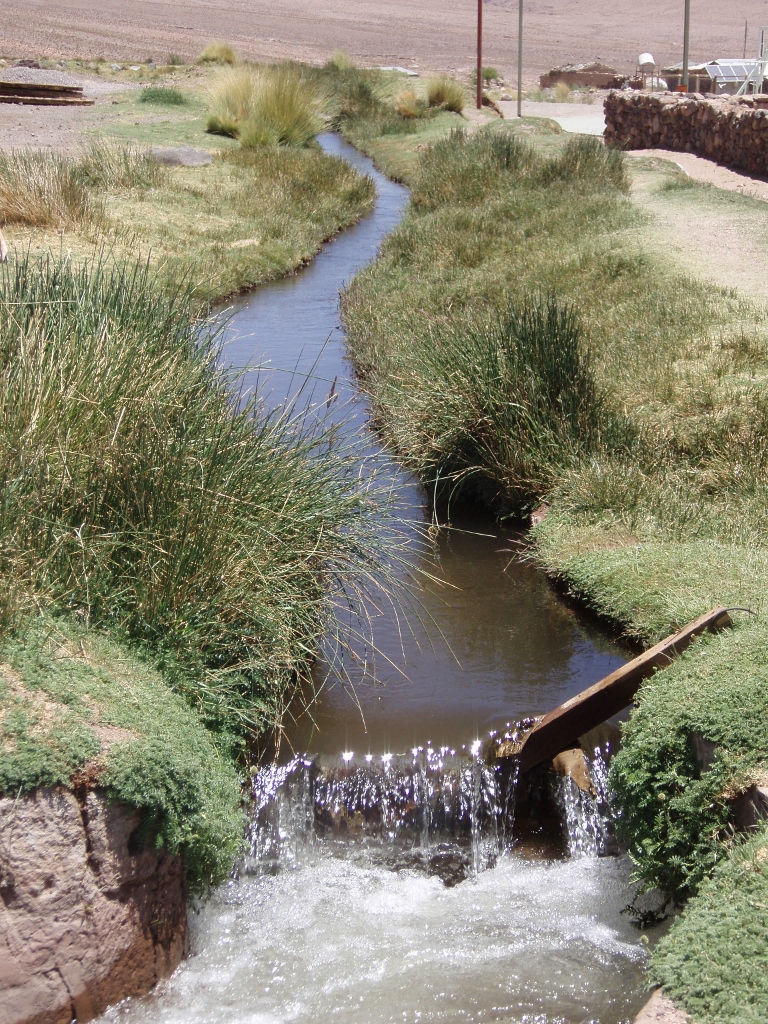 Water canal and grass in the middle of a desert
Water canal and grass in the middle of a desert
Thanks to this simple irrigation system, as well as occasionally seen terraces made by the local farmers in the “Inca style,” what little land with soil they have available has been turned into cultivated fields. It was quite unusual when in this part of Chile, in the middle of the desert, we came across green colour, maize and other crops growing nicely.
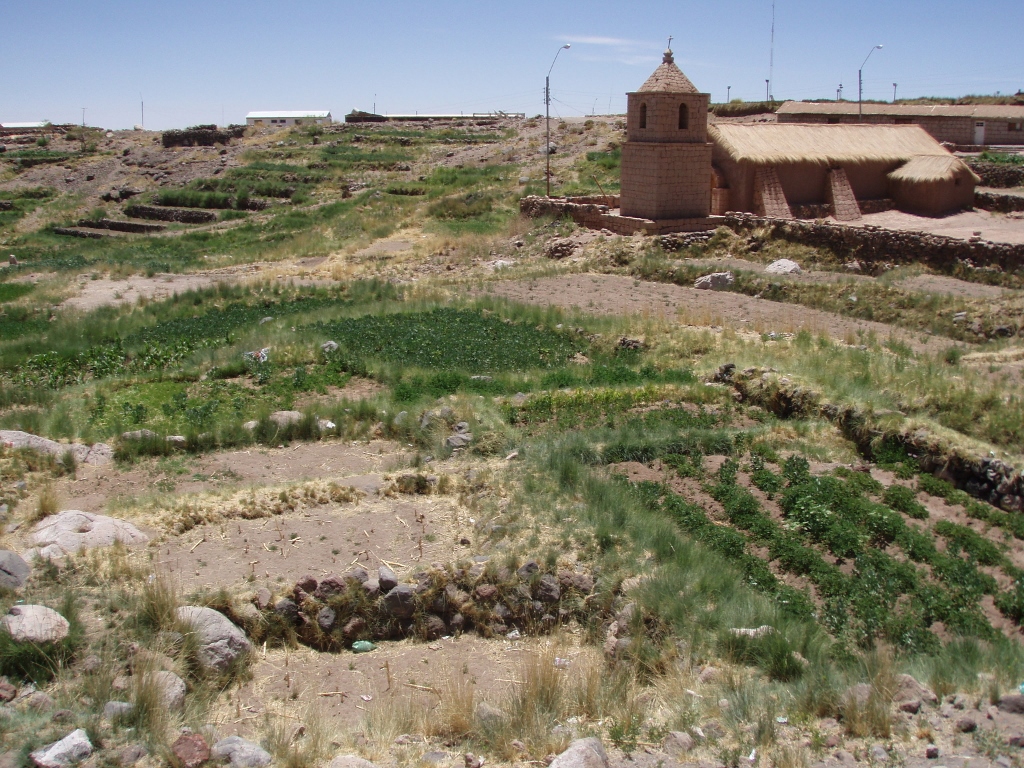 Sokaire village, green fields and a church made of the adobe
Sokaire village, green fields and a church made of the adobe
In the vicinity of Sokaire village, our driver turned off the engine and stopped the vehicle which was on a mild upward slope. The vehicle then slowly started to move forward on its own. As we were told, the reason for this was that there are deposits of magnetite in front of that section of the road and this was what “pulled” forward the vehicle full of iron.
Then we stopped at a restaurant for lunch, constituting a nice break, after which we went to the village of Toconao situated at around 2500 m above sea level and having around 700 residents. First we visited a small square in front of a church. There the guide explained to us why the cathedral and the belfry, both built in the 18th century and reconstructed in the second half of the 20th century, were separated by a street. Namely, in order to placate the local population when converting them, the Spaniards agreed to abide partially by the traditional beliefs by physically separating the belfry as the symbol of the male and the church as the symbol of the female.
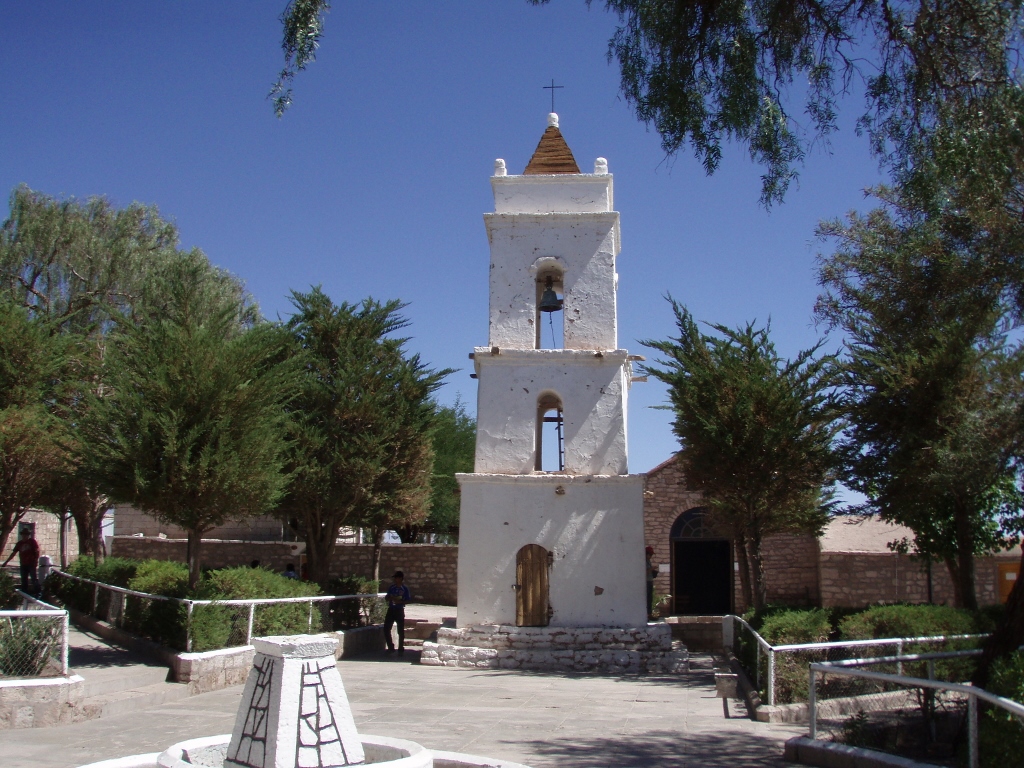 Toconao village, the belfry is located at the square, then there is a street behind it and only then comes the cathedral
Toconao village, the belfry is located at the square, then there is a street behind it and only then comes the cathedral
The population here mostly works in agriculture, breeding animals and growing vegetables and fruits, some work in the nearby lithium mines, while some work on local crafts to be offered to tourists.
Toconao is a proper oasis. There is fresh water running through the village along zigzagging canals and with its different trees, including figs, quinces, apricots and pomegranates, as well as other plants such as grapevines, the village seems almost like a garden of paradise. The “problem” in this apparently perfect picture are low poor houses and relatively compacted sand that constitutes streets.
Leaving Toconao, the road goes along a bridge and the bridge goes over a completely shockingly unexpected beautiful blue river that runs through a canyon. On the one side of the bridge, the view spread above the canyon and the river towards the desert with high volcanoes, and on the other we could see the village. There, on one of the rocks we saw a statue of Virgin Mary, since she had apparently at some point appeared there. I don’t know if that is true, but when we were there walking across the bridge, all we could see were some children joyfully swimming in the river beside the rock with the Virgin’s statue.
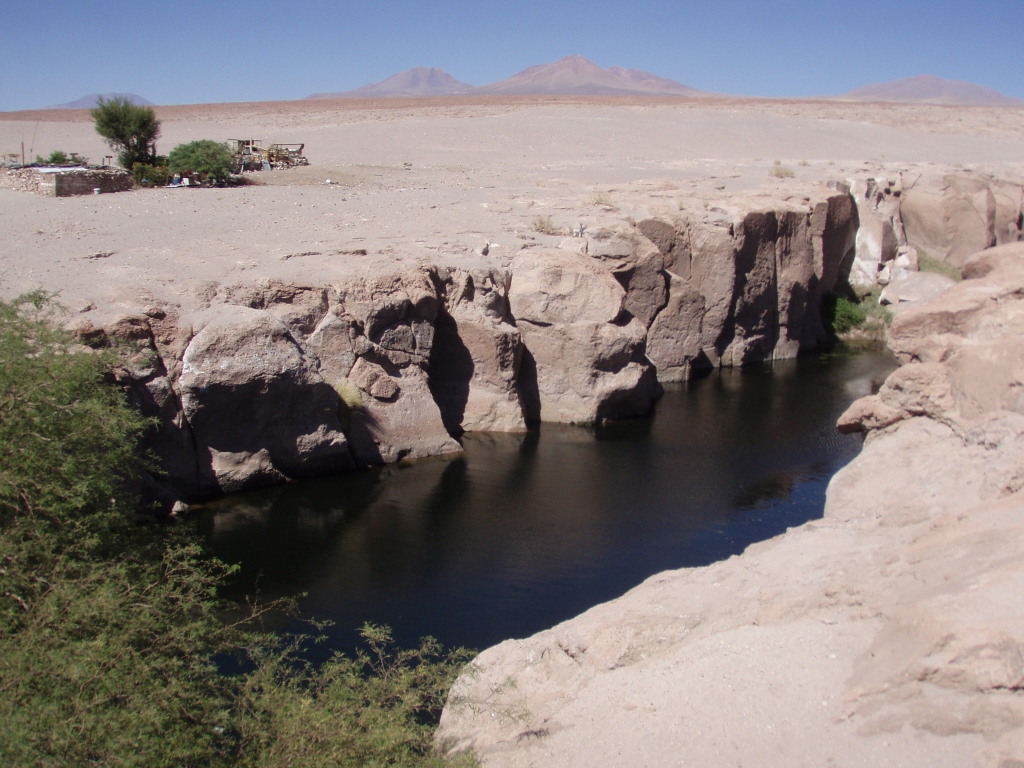 Toconao village, the canyon with the river in the middle of a desert
Toconao village, the canyon with the river in the middle of a desert
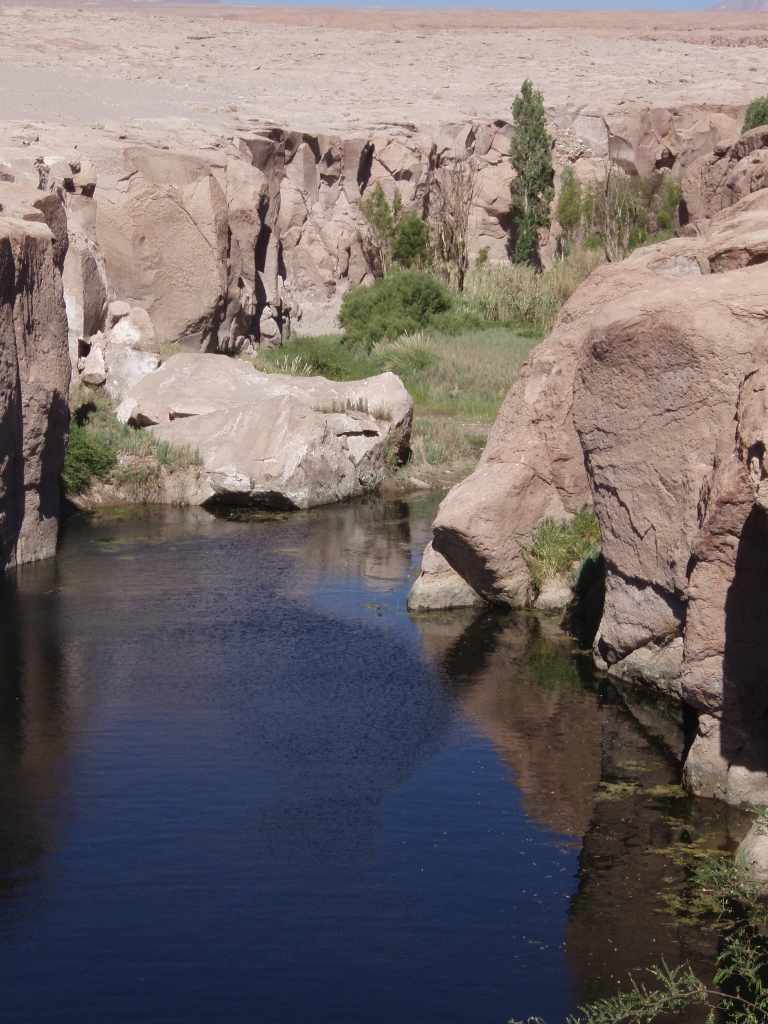 Toconao village, canyon with the river in the middle of a desert
Toconao village, canyon with the river in the middle of a desert
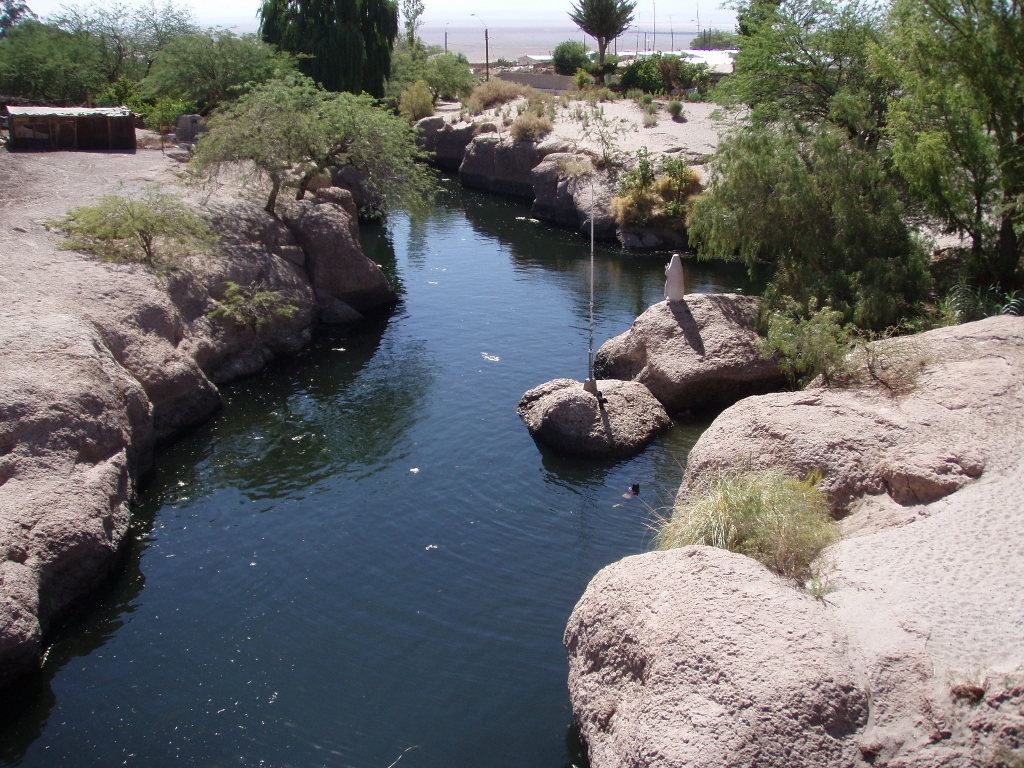 Toconao village, the statue of Virgin Mary may be seen on a rock on the right-hand side near the treetop and behind the statue there is a child swimming
Toconao village, the statue of Virgin Mary may be seen on a rock on the right-hand side near the treetop and behind the statue there is a child swimming
After our return to San Pedro, we got off the mini-bus in the centre of the village and there we had a stroll and finished some things – booked accommodation in La Serena, our next destination, went for coffee, took some brochures, window-shopped, walked along the main street and went to an internet-cafe. After all of this, we went back to our hotel to pick up our backpacks and then slowly proceeded to the terminal, as we continued with our journey by coach. The terminal was located on a corner of two dusty streets. The coach was leaving at 7.30 pm and according to the timetable it was supposed to reach La Serena the next day around 11.30 am – which was a 16-hour journey! Still, this was not at all as bad as one may think at first. These long journeys are usually organized in very comfortable coaches. The seats are like in a business class of an airplane, wide and snug, and they may be reclined quite a lot making it relatively easy to sleep there.
What I find interesting about road travel is when occasionally I come across some interesting details. One such detail was a beer ad, displayed in the back window of a coach that drove ahead of us for a while, which said: “I don’t have breaks with female passengers!” I’m always impressed by the “truckers” sense of humour.
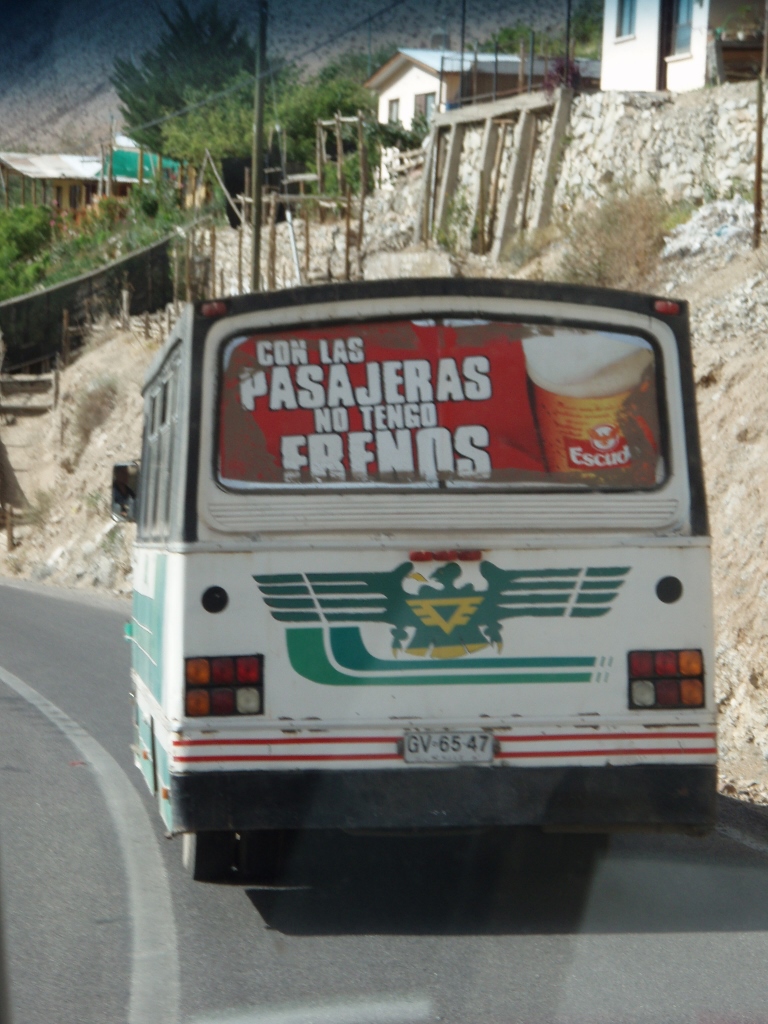 On the road from San Pedro to La Serena
On the road from San Pedro to La Serena
We arrived in La Serena as planned, i.e., a little before noon, so we immediately went to the hotel to refresh. The 16-hour trip on the coach was comfortable, no question about it, but it was also too long and required a good shower in order to regain the sense of cleanliness and lightness.
La Serena is a town in the middle north of the country with around 150,000 inhabitants, it is very close to the ocean and was founded in 1544. After San Pedro, a village in the middle of Atacama desert, coming to La Serena seemed almost like a return to civilization. The centre was full of solidly constructed buildings from the times past, mostly with 2 to 3 floors, and there was a lot of liveliness in the streets.
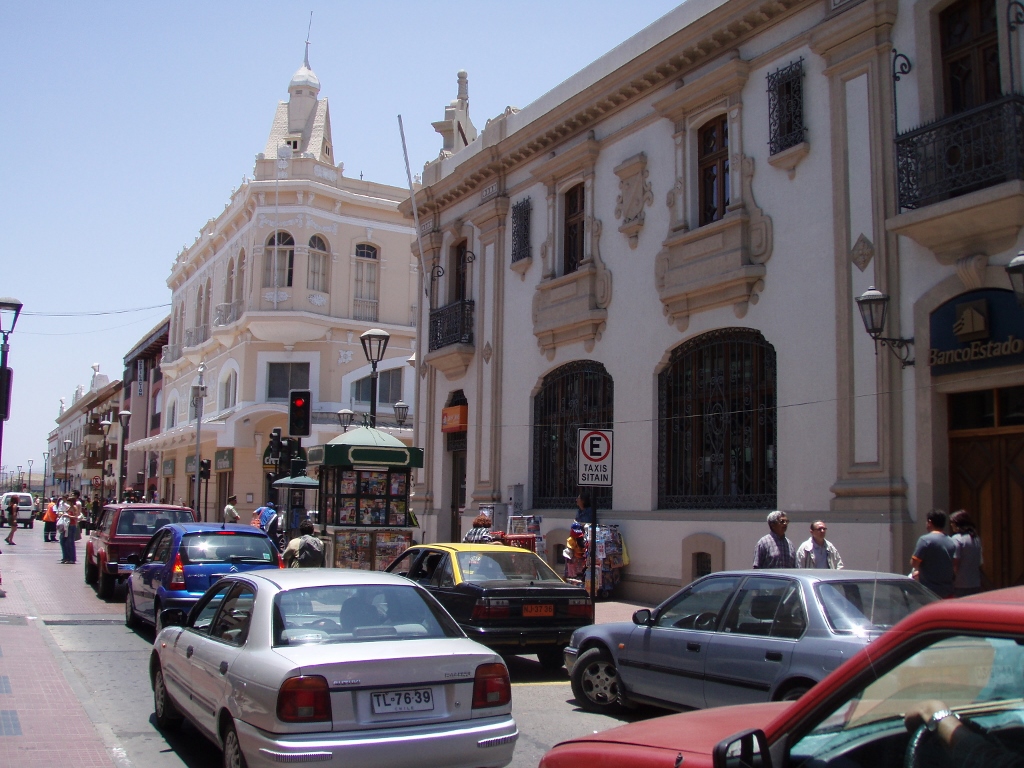 La Serena
La Serena
Although we did manage to sleep quite a lot on the coach the night before, it was still not a particularly good quality sleep, so we were both a little wavy in our heads and we first sat at a café to get additionally revitalized by taking a freshly squeezed papaya juice and coffee, after which we continued with our sightseeing of the town.
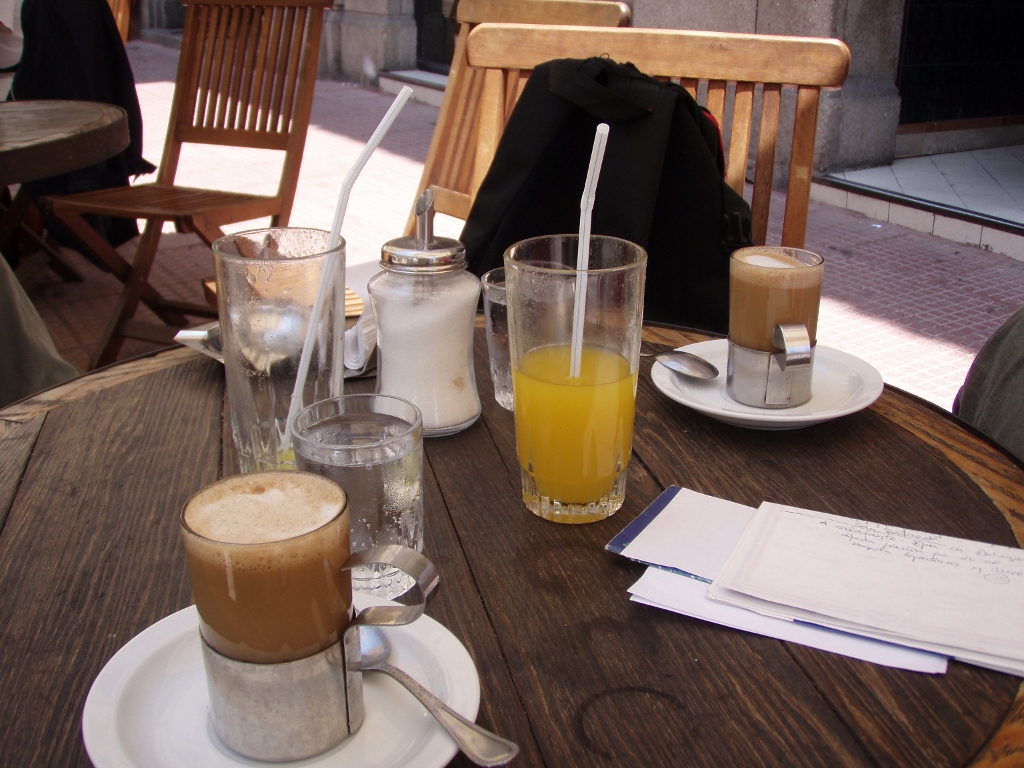 Our favourite coffee in Chile, “cut” – Dos cortados, por favor!
Our favourite coffee in Chile, “cut” – Dos cortados, por favor!
To start with, we mostly hanged around the central market which is a particularly lively place. Other than fruits and vegetables sold there, we found it interesting that it was warm and everybody was in short sleeves and yet there was a lot of glittering Christmas ornaments offered as it was the beginning of December. But, we come from the northern hemisphere and habits are strong.
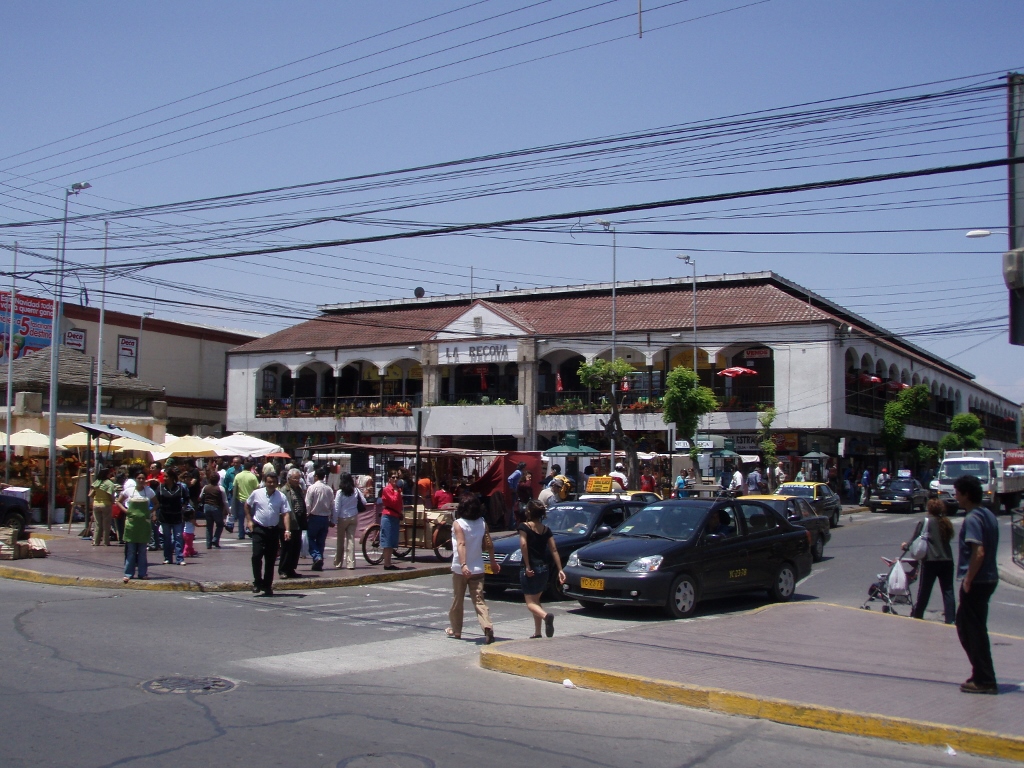 Central market in La Serena
Central market in La Serena
The market also had numerous shops with local crafts and clothes, as well as shops with crystals, jewellery (especially with lapis lazuli which may be found in significant quantities in this part of the country), candied fruit and different fruit preserves, as well as souvenirs and various knick-knacks. There I bought two “musical instruments” for myself in the form of an enclosed 20-30 cm long cylinder made of the cardon cactus, that we had seen being used for building churches, and here the hollow of the cactus was filled with seeds, so when one shakes the cylinder, the seeds hit the inner walls in the rhythm in which one is shaking the instrument. Having walked around the market for a while, we went upstairs, sat at a restaurant and from there we could look at all the motley atmosphere in peace and while eating.
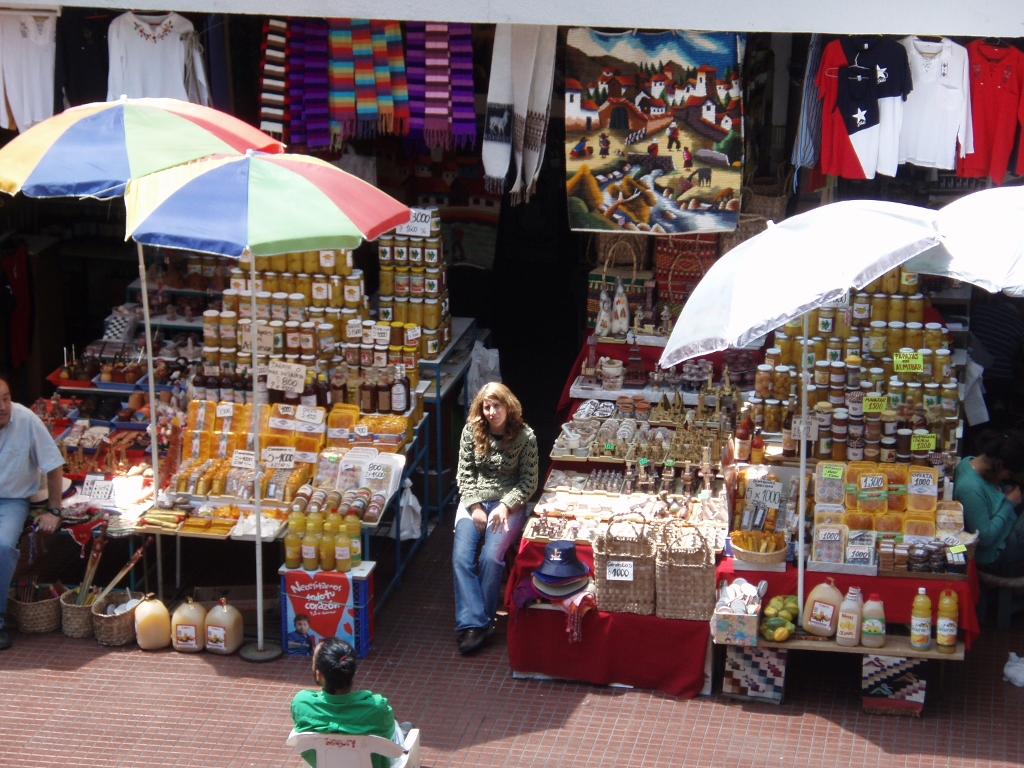 Central market in La Serena
Central market in La Serena
And then, after lunch, we went back to the hotel to have a proper rest, as we had an excursion to go to in the evening. This time we needed the night, as we were heading for the observatory of Mamalluca. Namely, this entire region and what I call the middle north of Chile, while the Chileans call it the Little North (Norte chico), and especially the very north of the country, are famous for their numerous observatories because this is the area with one of the cleanest skies in the world and the telescopes installed here are increasingly more and more powerful. The main reason is the low or non-existing light pollution. This means that there is very little light at night produced by humans and consequently very little interference in the possibility of unhindered watching of the night sky. In addition, these observatories are also constructed at higher altitudes and therefore the air is significantly cleaner and thinner, which means fewer particles that could also impede with the watching of stars. In order to visit some of these observatories, it is necessary for the interested people to sign up for this as much as a month in advance, but these are more powerful observatories that are also digital ones – the images that come through the telescope are projected onto a screen. This is what we were told. However, we opted for the Mamalluca observatory since on the one hand there is no waiting list for it, although it may be a little crowded when you go there, and on the other you are looking directly through the telescope which is previously set at a certain celestial sight by the people working there.
The road to Mamalluca took us along the valley of the Elqui river. Namely, the chain of the high Andes spreads parallel to the coast. As there is a lot of snow on the top and the snow thaws over time, all of this water has to go somewhere. Thus, the entire mountain chain is cut with valleys through which rivers reach the Pacific. The broad flattish Elqui valley surrounded by barren and dry slopes of the Andes is one of them and it is exceptionally fertile. Among other things, it is famous for its production of pisco, an alcoholic drink made of a special variety of grapes. There is a dispute between Chile and Peru as to who pisco belongs to (the drink is used in the famous cocktail pisco sour), but while this dispute is going on, both countries are producing the drink and enjoying in it, together with the rest of the world. In addition to grapes, there is also a lot of avocado (called palta in Chile) and papaya grown here. In one place, the river is cut with a dam with a large reservoir behind it, but this water is not used for the production of electricity, solely for irrigation, because agricultural production is very important for the life of the local population. While we were going to Mamalluca, the driver drew our attention to a mountain on top of which we could notice the Tololo observatory that is rather well-known and that is one of those for which one has to book a slot way in advance. The Mamalluca observatory was on the top of a hill. Modest, but served the purpose.
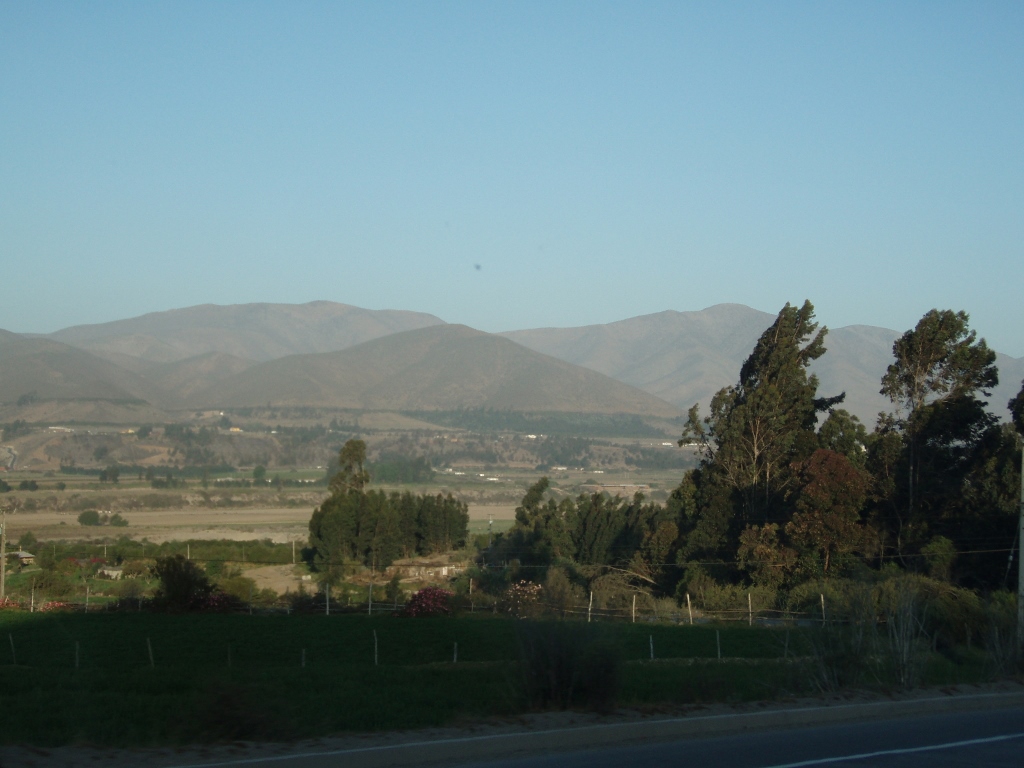 View from the coach at the hill of Mamalluca where there is the observatory
View from the coach at the hill of Mamalluca where there is the observatory
When we reached the observatory, the sun had already set and above the horizon I could clearly see the Evening Star, i.e., the Venus. That much I knew. Before looking through the telescope, we were taken for a short tour around the smallish observatory and we were told some details linked to the south sky. As opposed to the north, where there is the North Star and it is easy to establish the points of compass, it is not that simple in the south hemisphere. However, for those in the know, there is a relatively easy way to determine exactly the direction of south and subsequently the rest of it. After this, we went to look at stars, constellations and nebulae, and that was a truly magical and unique experience. The young man who guided us around would first set the telescope at the desired position and then the tourists lined up in order to peer through the hole in the telescope. The images I saw on these occasions were completely incredible, as if somebody had decided to play and paint his heart out. Maybe he has.